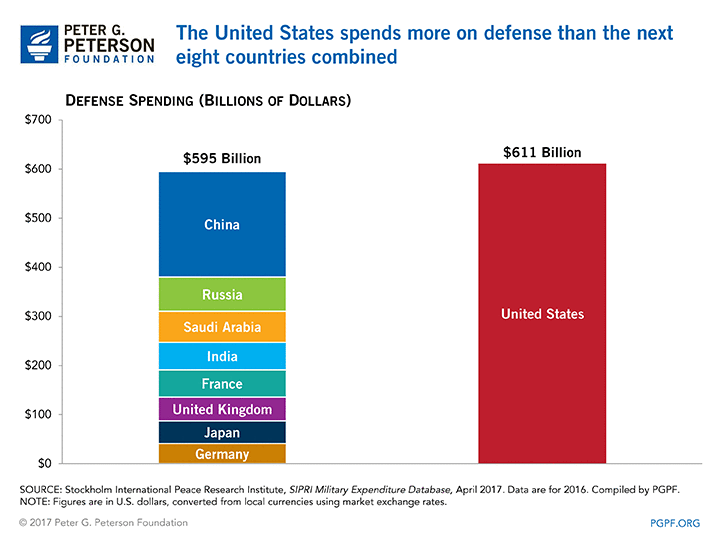What President Trump and the West Can Learn from China
Politics / GeoPolitics Nov 13, 2017 - 12:32 PM GMTBy: Antonius_Aquinas
 Instead of a demonstration of its overwhelming military might intended to intimidate tiny North Korea and pressure China to lean on its defiant communist neighbor, President Trump and the West should try to learn a few things from China.
Instead of a demonstration of its overwhelming military might intended to intimidate tiny North Korea and pressure China to lean on its defiant communist neighbor, President Trump and the West should try to learn a few things from China.
The President’s trip to the Far East came on the heels of the completion of China’s 19th National Congress where the current president, Xi Jinping, has cunningly positioned himself as China’s unchallenged leader. In an address at the opening of the Congress, Xi cautioned that the country faced “challenges” that are “extremely grim” yet, despite these, the nation’s future is “extremely bright.”*
While Western politicos and pundits bemoan the lack of political pluralism that exists within China and President Trump complained about bad trade “deals,” they miss an important factor as to why China has transformed itself from a socialist basket case some three decades ago into an economic powerhouse which now boasts over a third of the world’s billionaires!
China’s economic ascendancy can be attributed not only to the implementation of market reforms in the 1990s, but also its lack of “political competition.” As a one-party state, resources, time, energy, and capital are not allowed to be channeled into wasteful political processes, but instead are used and “invested” in wealth-creation activities – construction, factories, plants, equipment, research, technology – all of which leads to more and cheaper consumer goods.
The US and the West spend too much on elections, campaigns, polling, political consultation, etc., which diverts scarce resources away from the private wealth sectors of society. For example, in her last failed presidential campaign run, the Wicked Witch of Chappaqua alone spent over a half of billion dollars.
Under Western democratic pluralism, public debt and state spending have increased to unsustainable levels. In the US alone – history’s greatest debtor nation – the national debt is in excess of $20 trillion, while its total debt officially is $68 billion with a federal deficit (GAAP) running yearly at $5 ½ trillion.
Such staggering numbers are the result, in part, from political parties seeking public office and once elected exploiting their position to enrich themselves, their constituents, and create dependent classes among the ever shrinking productive segments of society.
China’s foreign policy – an extension of politics – has also been conducive for wealth creation. Instead of wasteful spending on military hardware, the maintenance of a far-flung global empire, and involvement in incessant wars, Chinas has a rather meek military compared to its national income and has conducted a pretty much non-interventionist foreign policy – witness its diplomacy with North Korea.
The US is almost the polar opposite. It spends more on “defense” than the next eight countries combined.** Instead of the production of useful consumer goods, billions are siphoned off into the military/security industrial complex. Not only does this impoverish Americans at home, but it leads to never ending involvement in wars, conflicts, and disputes, most of which are created or exacerbated by US spy organizations.

After meeting with Chinese leadership, President Trump tweeted:
I don’t blame China, I blame the incompetence
of past Admins for allowing China to take advantage
of the U.S. on trade leading up to a point where the
U.S. is losing $100’s of billions. How can you blame
China for taking advantage of people that had no clue?
I would’ve done the same!
Making better trade deals will not revitalize the moribund US economy. Instead, there should be less politicization of society and adoption of market reforms as China has done. The most important plank of such a policy would be the encouragement of real savings – not the creation of bank credit – through the normalization of interest rates. This would begin the arduous process of capital accumulation, the basis upon which any economy can be built.
Another sign of the divergence between the two is China’s continued push to make the yuan the world’s reserve currency with apparently some sort of gold backing to it. Contrarily, the Trump Administration has continued the same disastrous policies of its predecessors and has chosen a Janet Yellen clone to head the Federal Reserve with a continuation, no doubt, of the suppression of interest rates. On the other hand, China continues to import massive quantities of gold and encourages its citizens to own the yellow metal while the West is in the midst of a crypto currency mania, another fraudulent monetary scheme.
China’s economic miracle, while certainly impressive, would not look as astounding if Western economies had not been in a state of stagnation and decline over the past half century. It was not political liberalization that led to China’s phenomenal growth, but economic freedom which used to be a staple of Western life. The lesson that should be taken from President Trump’s trip is less politics domestically and more free markets.
*Chris Buckley, “Xi Jinping Opens China’s Party Congress, His Hold Tighter Than Ever.” The New York Times, 17 October 2017. https://www.nytimes.com/2017/10/17/world/asia/xi-jinping-communist-party-china.html
**Peter G. Peterson Foundation. “US Defense Spending Compared to Other Countries.” 1 June 2017. https://www.pgpf.org/chart-archive/0053_defense-comparison
Antonius Aquinas@AntoniusAquinas
By Antonius Aquinas
© 2017 Copyright Antonius Aquinas - All Rights Reserved Disclaimer: The above is a matter of opinion provided for general information purposes only and is not intended as investment advice. Information and analysis above are derived from sources and utilising methods believed to be reliable, but we cannot accept responsibility for any losses you may incur as a result of this analysis. Individuals should consult with their personal financial advisors.
© 2005-2022 http://www.MarketOracle.co.uk - The Market Oracle is a FREE Daily Financial Markets Analysis & Forecasting online publication.



